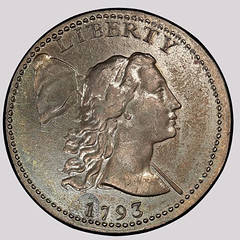
PREV ARTICLE
NEXT ARTICLE
FULL ISSUE
PREV FULL ISSUE
STUDY EXAMINES RARE COIN INVESTMENT RETURNSA short article published May 18, 2017 by The Economist reviews the recent history of the numismatic market, highlighting a study that found rare coins returned 195% over the
ten years to the end of 2016, outperforming other asset classes including the S&P 500 Index. Thanks to Colin Gullberg for suggesting this one. -Editor
The rare-coin market, however, has long had a reputational problem. What distinguishes a highly valuable coin—lustre, sharpness of detail, toning and friction-wear—is imperceptible to the untrained eye. So shady coin-dealers for decades successfully duped investors into paying top dollar for non-premium or even counterfeit coins. The market’s wild-west days ended in 1986 when the first independent coin certifier, the Professional Coin Grading Service (PCGS), based in California, established itself as an authority on authenticity and quality. Grading each coin on a one to 70 scale, PCGS gave the market transparency, boosting investor confidence and sales volumes. Today, global sales of rare coins are estimated at $5bn-8bn a year, with 85% of the market in America. So important has third-party grading become that almost all rare coins sold at auction these days have been graded and sealed in stickered plastic by either PCGS or its main rival, Numismatic Guaranty Corporation (NGC), which is based in Florida. Some blame the grading system itself for the eye-watering returns. Investors cling to the assigned grade: even a one-point boost can double or even triple a coin’s retail price. An 1884 silver dollar from the San Francisco mint, for instance, sells for $19,500 at the 62 grade but surges to $65,000 at 63. The grading process is subjective: the evaluation criteria include “eye appeal”. Scott Travers, a coin dealer in New York, says investors sometimes resubmit the same coin ten or 20 times to the same company in hope of an upgrade. All this led to a steady “grade inflation”, that has been cheered along by investors. But in the long term, a sustained rise by simple fiat in the number of high-grade coins will surely depress prices. Already, a new type of “grader of graders” has emerged, hoping to instil some discipline by rating the consistency of the two primary graders. Next: graders of graders of graders? To read the complete article, see:
THE BOOK BAZARREWayne Homren, Editor The Numismatic Bibliomania Society is a non-profit organization promoting numismatic literature. See our web site at coinbooks.org. To submit items for publication in The E-Sylum, write to the Editor at this address: whomren@gmail.com To subscribe go to: https://my.binhost.com/lists/listinfo/esylum All Rights Reserved. NBS Home Page Contact the NBS webmaster 
|
